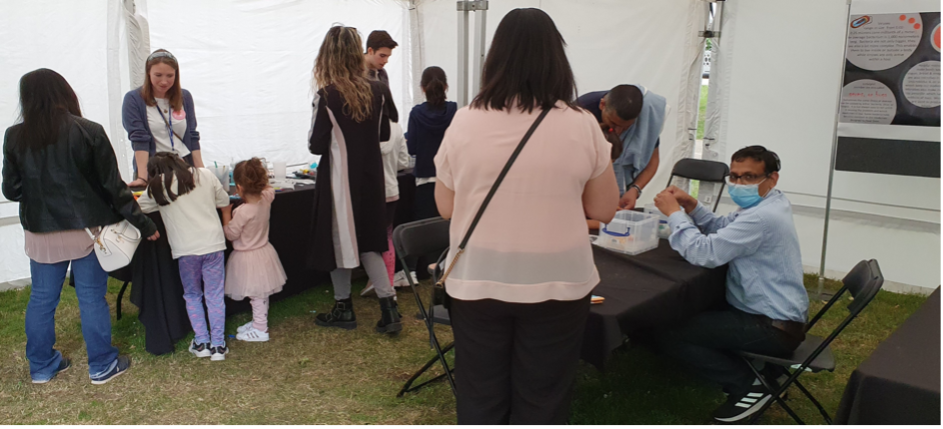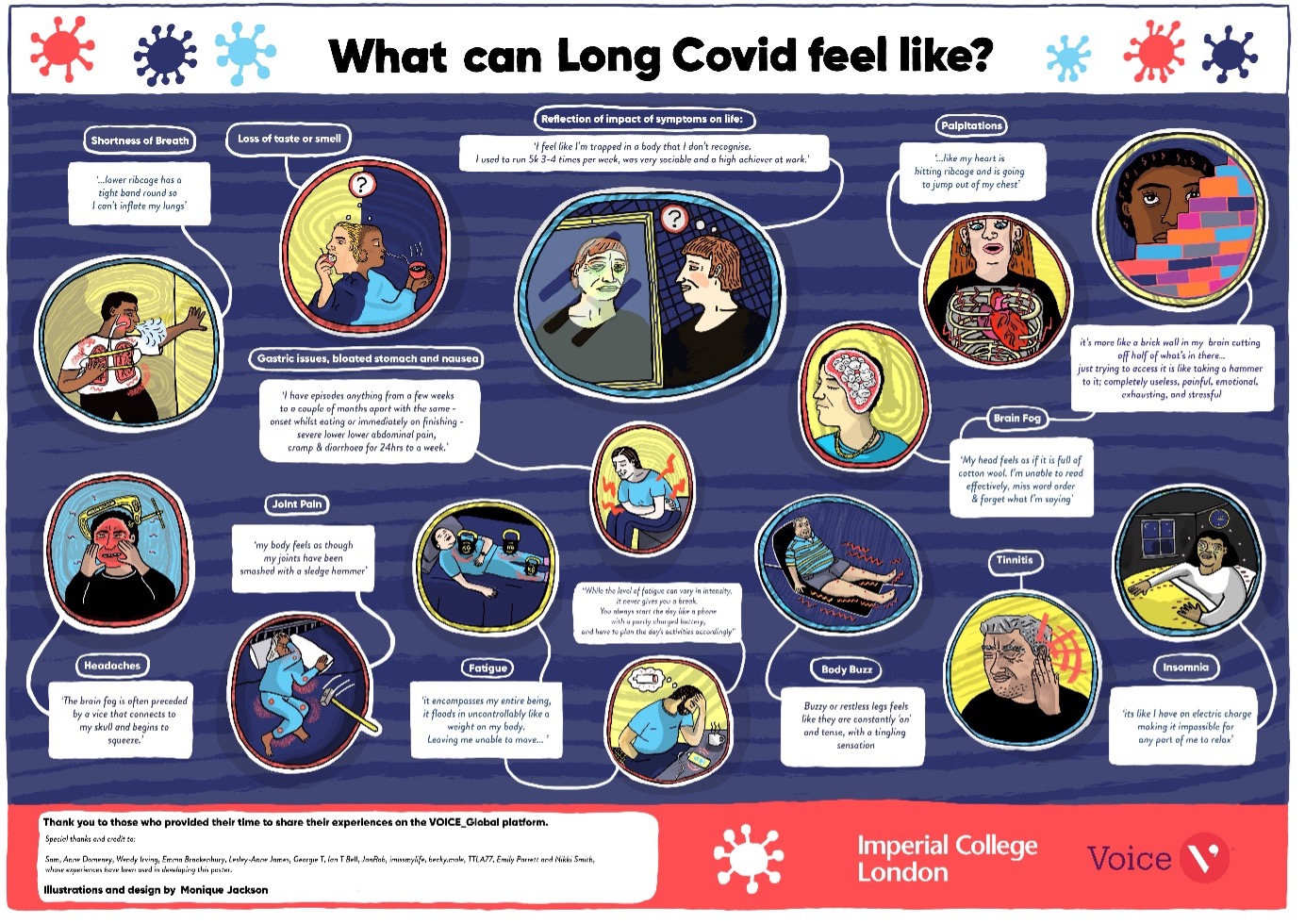Introducing the winners of the 2022 Societal Engagement Seed Fund. We're thrilled to continue supporting a wide range of public engagement activities with this fund, find out more about the different projects below.
Wattown: Modelling energy supply and demand for a connected city - led by Kathryn Wills
 Wattown is an interactive model of energy supply and demand in a town of the near future, showing electricity supply and storage options. It is a great tool to illustrate integration of renewable energy sources such as solar and wind, as well as the installation of new technologies into the national grid for energy storage.
Wattown is an interactive model of energy supply and demand in a town of the near future, showing electricity supply and storage options. It is a great tool to illustrate integration of renewable energy sources such as solar and wind, as well as the installation of new technologies into the national grid for energy storage.
At the 2022 Great Exhibition Road Festival, Wattown drew in young visitors as we asked them to become the Mayor of Wattown. Our interactive model sparked the imagination of these young visitors as they discussed ideas to power low-carbon cities and reduce the city’s environmental impact. Our team of volunteers also used Wattown to inform accompanying adults about our current and future energy system and, importantly, how emerging energy technologies and changes to the system may impact their lives.
To learn more about our research or to get in touch, please visit the Energy Futures Lab website or X.
Microbes rise to the challenge of plastic waste – led by Dr Alice Banks and Dr Joanne Benton
 Plastics is part of our everyday lives, however, its widespread use in commodity packaging and disposable domestic products has dramatically contributed to global plastic pollution. This engagement project aims to increase awareness of the plastic crisis, and to inform the public about current research into addressing the challenging situation we face.
Plastics is part of our everyday lives, however, its widespread use in commodity packaging and disposable domestic products has dramatically contributed to global plastic pollution. This engagement project aims to increase awareness of the plastic crisis, and to inform the public about current research into addressing the challenging situation we face.
MIPLACE is a European consortium of researchers investigating the microbial integration of plastics in the circular economy. The goal is to use microorganisms to degrade waste plastic and to convert the resulting waste into new products of a higher value, a process known as upcycling. Specifically, the research focusses on degrading polyethylene terephthalate (PET) and polyurethane (PU), key materials in the food and beverage packaging industry, and the production of flexible and rigid foams respectively. The degradation products of PET and PU are being repurposed to produce materials which can be used in the construction industry, such as waterproofing and insulation materials.
Our engagement project sets out to inform several key groups within the community. One major opportunity to engage with families of children aged 5-12 was the Great Exhibition Road Festival. Our interactive exhibit in the Family Zone allowed visitors to learn about microorganisms and to create their own microbe using craft materials. We also spoke to visitors about the work we are doing to engineer microorganisms to degrade and upcycle plastics, and we offered visitors the opportunity to leave feedback on our research and their thoughts on the future of plastic use. We have also arranged to contribute to a talk series hosted by the charity OpenAge. OpenAge work with a community of individuals in London, aged 50 and above, to provide activities that offer new experiences and nurture different interests.
For more information on our research, visit our website or follow us on X. We have also produced a video on the MIPLACE project providing an overview of our research.
Understanding & visualising the lived experience of Long COVID - led by Halle Johnson
 It’s currently estimated that nearly 2 million people in the UK have ongoing and persistent symptoms following COVID-19 infection. Many of our close community including staff and students at Imperial, particularly health professionals working in the Trust, will be living with ongoing symptoms after COVID-19 which will be impacting their lives. Due to the new nature of this condition, long COVID is still poorly understood, complex and ever-changing.
It’s currently estimated that nearly 2 million people in the UK have ongoing and persistent symptoms following COVID-19 infection. Many of our close community including staff and students at Imperial, particularly health professionals working in the Trust, will be living with ongoing symptoms after COVID-19 which will be impacting their lives. Due to the new nature of this condition, long COVID is still poorly understood, complex and ever-changing.
There is a sense of frustration from people with Long COVID that the public are moving on from the COVID-19 pandemic and disregarding the experiences of people with long COVID. Further, many are not aware of Long COVID and its associated impact. It’s now more important than ever, that the experiences of people with Long COVID are shared and acknowledged.
Our overall aim of the visualising Long COVID project is to creatively share the symptom description responses (of which we have received over 100) as part of our ‘defining Long COVID challenge’. We wish to raise awareness of the breadth of symptoms and their impact to our local community and health care professionals (HCPs) in a way that is accessible and engaging.
To achieve this, we have been working collaboratively with an artist who is living with long COVID (Still Ill Corona diary) to develop illustrations which visually capture the range and impact of Long COVID symptoms, e.g. what ‘fatigue’, ‘breathlessness’, ‘pain’, ‘tingling/buzzing’, ‘brain fog’ feels like.
Backbone biomechanics: functional anatomy of your spine - led by Nicolas Newell
 Backbone Biomechanics is our initiative from the Department of Bioengineering’s Spine Lab showcasing the functional anatomy of the spine. In this activity, we collaboratively build a spine out of model bones and clay discs, and discover how the spine looks, moves, and protects internal organs. Our goal is to demystify the concept of biomechanics, illustrating healthy practices and the progression of spinal disorders with the physical motion of the spine. We have showcased Backbone Biomechanics at the Great Exhibition Road Festival, providing examples of the research within Imperial. We have also delivered this activity to visiting school groups to promote interest in STEM and help students make an informed decision about their future career.
Backbone Biomechanics is our initiative from the Department of Bioengineering’s Spine Lab showcasing the functional anatomy of the spine. In this activity, we collaboratively build a spine out of model bones and clay discs, and discover how the spine looks, moves, and protects internal organs. Our goal is to demystify the concept of biomechanics, illustrating healthy practices and the progression of spinal disorders with the physical motion of the spine. We have showcased Backbone Biomechanics at the Great Exhibition Road Festival, providing examples of the research within Imperial. We have also delivered this activity to visiting school groups to promote interest in STEM and help students make an informed decision about their future career.